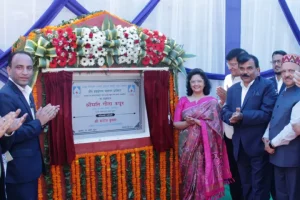In a first, the Airports Authority of India today successfully conducted the landing of an IndiGo Airlines plane using a GPS aided approach system (GAGAN), at the Kishangarh airport in Rajasthan, the Civil Aviation Ministry said on Thursday.
The system uses an ISRO satellite and does not require ground-based navigational infrastructure to guide the touchdown of aircraft.
The success of the trial landing, places India among only four Space-Based augmentation systems available in the world, the other three being US(WAAS), Europe (EGNOS) and Japan (MSAS). GAGAN is the first such system developed for India and neighbouring countries in the equatorial region and is operationally equivalent to an advanced CAT-II landing system used for low visibility landings.
The success of the GAGAN trial will make it possible for commercial aircraft to land at airports not equipped with expensive Instrument Landing Systems, which includes many small regional and local airports.
The service relies on the availability of GPS and GAGAN Geo Stationary Satellites (GSAT-8, GSAT-10 and GSAT-15), launched by ISRO.
GAGAN is an Indian Satellite Based Augmentation System (SBAS) jointly developed by AAI and ISRO. It is the first such system developed for India and neighbouring countries in the equatorial region. GAGAN System was certified by DGCA in 2015 for Approach with Vertical Guidance (APV 1) and en route (RNP 0.1) operations.
Indigo Airlines using its ATR aircraft has flown an Instrument Approach Procedure (IAP) with LPV minima of 250 ft, using GAGAN Service. The tests at Kishangarh Airport were performed as part of initial GAGAN LPV flight trials along with the DGCA team on- board. After the final approval by DGCA, the procedure will be available for usage of commercial flights.
Lowering the decision height up to 250 ft provides a substantial operational benefit in poor weather and low visibility conditions. Thus, any airport which hitherto would require higher visibility minima, will be able to accept aircraft benefitting remote airports which are devoid of precision approach capability equipment, the civil aviation ministry said.
Number of airports including airports under Regional Connectivity Scheme (RCS) are being surveyed for development of GAGAN based LPV Instrument Approach Procedures so that suitably equipped aircraft can derive maximum benefit in terms of improved safety during landing, reduction in fuel consumption, reduction in delays, diversions and cancellations etc.
Also read: UDAN civil flights resume at Bagdogra airport as IAF spruces up runway




















